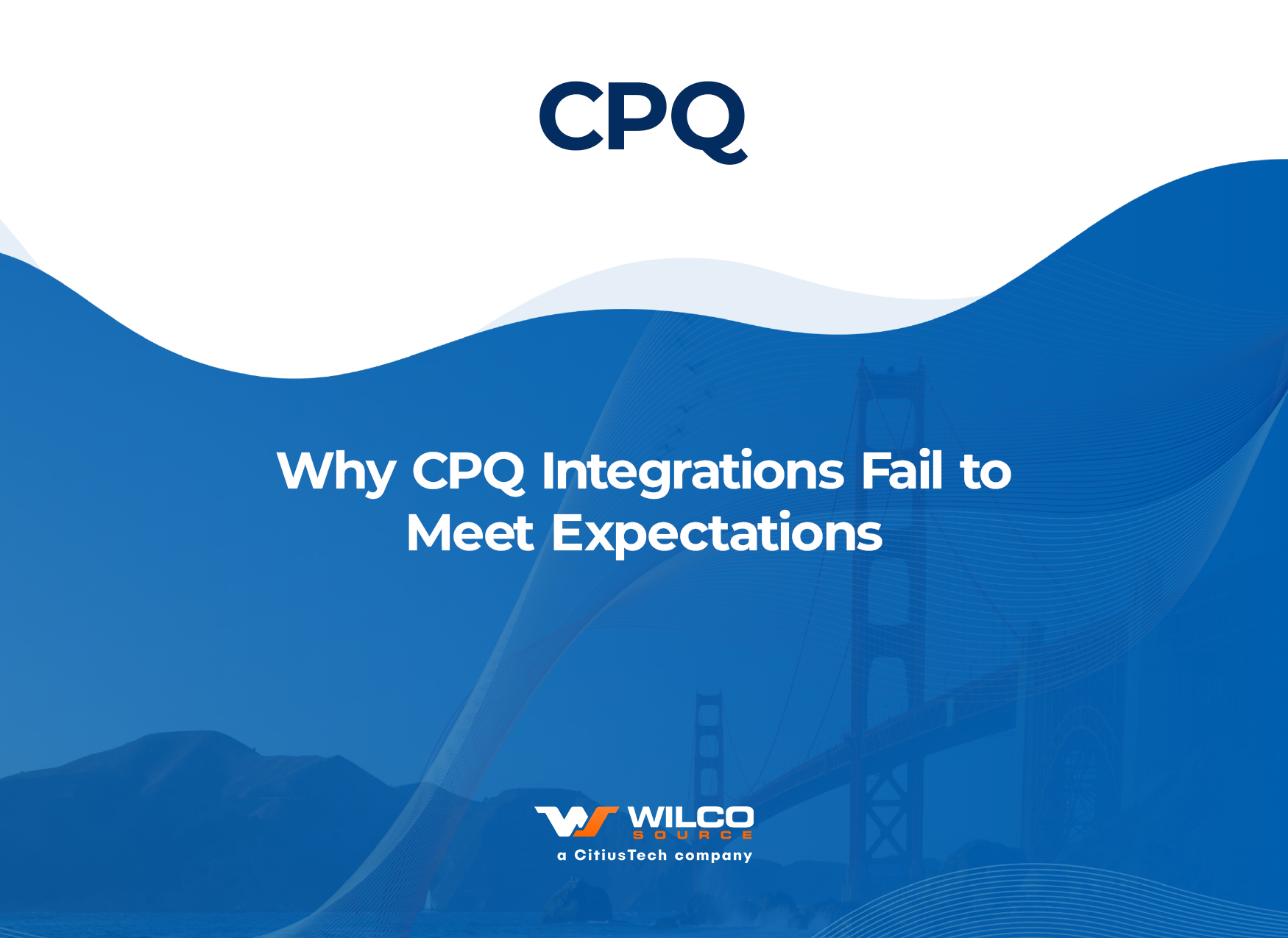Why CPQ Integrations Fail to Meet Expectations

Faster quote generation, shortened sales cycles, boosts in productivity — there’s no doubt CPQ (configure, price, quote) software can greatly benefit revenue teams. This is because it takes information that used to be distributed across the organization, siloed in different departments and platforms, and centralizes it, making it ready to be accessed and analyzed by sales, customer success and fulfillment teams, and decision makers.
However, integrating a robust, powerful tool like CPQ doesn’t come without its challenges. In fact, far too many implementations fail to meet goals and expectations. Often it’s because there wasn’t a roadmap in place that defined what success looked like, accounted for current business processes, and outlined a plan for change management.
To avoid this fate, let’s take a look at some of the most common mistakes organizations make when integrating CPQ software.
Project success was never properly defined
Companies often recognize the need to digitally transform but merely focus on the “as-is” state or the problems they are looking to solve, rather than defining the desired state. Understanding and agreeing on what a successful CPQ integration looks like from a departmental and organizational perspective is half the battle.
Quite often, organizations fail to address and pinpoint quantitative and qualitative goals that are directly linked to CPQ adoption. Not establishing necessary KPIs or creating an adequate transition plan can create dissatisfaction in the integration process because it becomes increasingly more difficult to identify the issues that are responsible for either success or failure.
The goal of CPQ software is to streamline processes and increase bottom line. To evaluate how well those goals are being met, you must clearly define performance metrics for the specific areas you’re looking to improve. That might be higher quote accuracy, faster quote delivery, increased revenue contribution, increased ROI in quote-to-cash, to name a few.
Business processes were not assessed
The reality is, companies think successful CPQ integration is about having expertise in the software — but it’s not. Yes, knowing the software well is extremely helpful, but the most important factor in success is truly understanding your business processes.
Prior to integrating a new system, it’s imperative to first look at business processes in detail. The inability to fully define and roadmap processes can force your team to adapt to the tech versus having tech adapt to them.
CPQ integration should be transformative — processes streamlined, customer behavior advanced, and data maintenance handled in real time — not revolutionary. Making the mistake of not fully documenting your processes and weaving them into an out-of-the-box solution will either result in poor adoption or force teams to spend more time adjusting to the new platform than successfully selling.
But for process assessment to be successful, it needs to involve all of the key players. Failing to include each of the departments involved in the sales cycle, as well as customers and other stakeholders will likely lead to gaps, inefficiencies, and ultimately unsuccessful CPQ integration.
The system was over- or under-configured
By nature, CPQ is complex as well as flexible. It can be easy for CPQ users to either oversimplify integration by using an out-of-the-box solution or over complicate the process by implementing too many configurations and customizations.
The problem is, many businesses look at out-of-the-box CPQ software solutions as an either/or option — you can either adopt a standard solution or a fully customized solution. However, it’s likely that some of your processes are fairly standard and can be met with an out-of-the-box solution, while some are unique enough that they need more platform configurations.
Instead of thinking either/or, it’s better to adopt a CPQ solution that provides rich functionality out of the box, but also allows for configuration to adapt to your team’s unique workflows, and more importantly, evolve alongside your organization as you grow and scale.
Data quality was poor or limited
The problem many organizations run into is not establishing or focusing enough efforts on data management. CPQ is a data-based tool, so it’s only as good and useful as the quality of the data you put into it. Poor or limited data is one of the most common, yet avoidable reasons CPQ implementations fail.
If the data used in your new CPQ system is outdated or inaccurate, it creates inefficiencies and errors, and your sales teams are either going to use the software incorrectly or end up not using it at all. Ultimately, analyzing poor data or looking at it through the wrong context could push businesses down the wrong path—an irreversible consequence that could lead to disaster.
Prior to integrating a new CPQ solution establish processes to thoroughly manage data. Start by identifying the data and its source, whether from a CRM or offline. Then check your data for quality and accuracy, ensure it is up-to-date and transparently maintained in real-time, and always be sure to assign data owners who will be responsible for keeping it current and error free.
Salesforce CPQ can transform your business — providing streamlined processes, improved accuracy, personalized service, and maximized sales — if integrated properly. It’s important to take into consideration these common mistakes and make every effort to put the right processes and procedures in place to ensure you maximize your CPQ investment.